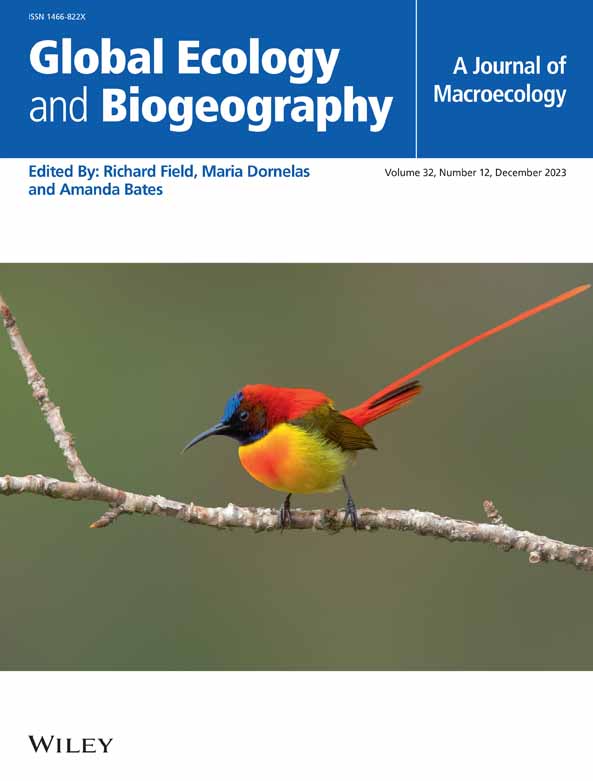Natural Disturbances and Connectivity Drive Seasonal Taxonomic and Trait Patterns of Aquatic Macroinvertebrate Communities Across Europe
Abstract
Aim
Understanding the joint influence of natural disturbance regime, connectivity and biogeography on the seasonal variation of community structure.
Location
Drying river networks (DRN) in Europe.
Time Period
Present.
Major Taxa Studied
Aquatic macroinvertebrates.
Methods
We analyse the taxonomic and trait structure of 638 macroinvertebrate communities sampled across 125 reaches with perennial and intermittent streamflow, surveyed in six DRNs across Europe, up to six times over 1 year.
Results
Richness and trait diversity of macroinvertebrate communities decreased with increasing drying frequency, but increased with spatio-temporal connectivity in reaches with long drying events. Communities experiencing frequent drying events had higher relative abundance of taxa with a long lifecycle and drying resistance traits. Communities experiencing long drying events compensated by high spatio-temporal connectivity, and had more taxa with high fecundity and high dispersal ability. Taxa richness peaked in summer but that pattern was more prominent when drying frequency was high. Trait diversity decreased throughout the year, showing increasing abiotic stress as the year progressed. Communities changed from communities of mobile, fecund, short-lived taxa in spring and autumn to communities of long-lived taxa in summer. However, when drying frequency increased, autumn communities shifted towards communities of long-lived taxa. Macroinvertebrate community trait structure changed across Europe. It opposed communities from Mediterranean and/or upland DRNs (with more fecund and mobile taxa) to lowland DRNs (with more long-lived taxa).
Main Conclusions
Frequency and duration of drying events and spatio-temporal connectivity drive divergent macroinvertebrate community structures, suggesting the presence of an ecological threshold that explains the variability of disturbed ecosystems across broad spatial scales. These factors also influence seasonal variations, with macroinvertebrate communities shaped by distinct trait-filtering processes throughout the year based on drying frequency. Ultimately, spatio-temporal connectivity plays a crucial role in sustaining species richness and trait diversity in reaches experiencing intense drying.


 求助内容:
求助内容: 应助结果提醒方式:
应助结果提醒方式:


